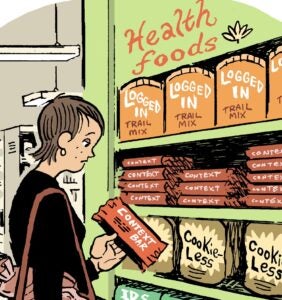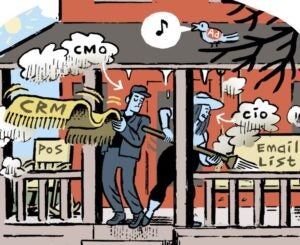 The Media Trust is a company that verifies the placement of ads relative to what the buyer originally intended. Sounds like the ad verification space popularized by companies like DoubleVerify, AdSafe and ComScore’s AdXpose, right? Well, it’s not.
The Media Trust is a company that verifies the placement of ads relative to what the buyer originally intended. Sounds like the ad verification space popularized by companies like DoubleVerify, AdSafe and ComScore’s AdXpose, right? Well, it’s not.
Though the pitch seems similar, according to CEO Chris Olson, the concept isn’t about brand safety metrics of the page. Rather it’s about quality checks on the ads themselves and serving a target market of publisher and ad network clients.
So – are the geographic and behavioral targets of a campaign ad correct? Was a rich media ad unit running, or was it a backup JPEG doppleganger? And along the way, The Media Trust malvertising “watchdog” product is sniffing for trouble.
To deal with the voluminous data challenges, Olson says the company has physical infrastructure in 42 countries and approximately 370 cities today. Yet, eight year-old The Media Trust has only 40 employees with its main office in McLean, Virginia.
AdExchanger spoke to Olson last week about his company…
AdExchanger: Why did you see the need for a publisher-side solution when it’s about solving advertiser problems?
CHRIS OLSON: An advertiser should certainly be reviewing their own creative before a campaign launches. But, it is, and will always be, a publisher issue in that the media that the agency is buying is a product [delivered] to the seller. It is different than 99% of all other transactions.
In digital, the seller is responsible for what is running on their site and they are the ones that make sure the qualities of a particular creative that are running there, match what their site wants from [content] and ad security perspectives.
Ultimately, the publisher is blamed if something bad is delivered – whether it is from a programmatic channel or wherever. And, the publisher is responsible for the consumer.
Today, the qualification around what should be running on a site from a technical viewpoint – whether it’s the file size of the ad, the load times, the index, how many pixels are there, what that pixel is doing – it’s very complicated across the myriad number of publishers, ad networks or exchanges through which the agency creative is going to be running.
Whether it should be this way or not, it is incumbent upon the publisher to make sure that their goals are enforced because at the end of the day it might be too much for the agency to handle without automated means – in other words, being able to scan all of the different rule attributes through all of the channels in which they’re running ads.
Why hasn’t the ad verification that DoubleVerify, AdSafe and others popularized become an additional tool that you provide customers?
We made a decision three or four years ago when the “brand safety” companies came in. We thought [it was a technology] that was going to be fairly ubiquitous, but at some point, a commoditized service built into ad servers.
Also, it would have changed the direction of where our company was going. Our core competency is scanning and monitoring the Internet from the client side. So we don’t pick ads. We’re not doing semantic classification of content. So, the way that our technology operates, we’re going to be doing much better sticking with our original ad verification product set and utilizing that base to become the primary provider of ad security data, data leakage, data transparency and creative quality services.
We’re looking at it from what is being delivered, what are all of the things that passed and is it meeting the guidelines and the rules sets for all the different constituents from the DSP to the network, to the exchange, to the SSP, to the publisher. It’s a different layer of transparency that is equally important for programmatic to grow as well as mobile and traditional display, in general.
Can you take me through a popular use case of your media product today?
So, that’s ad security, data transparency, and creative QA products. The end goal is to enable the constituents in that programmatic execution to be able to know up and down the chain what is actually running behind the ad tag, the execution URL, whatever piece of code that’s going to be running the creative.
When we’re scanning, we’re capturing the creative copy. We’ve classified literally tens of millions of creatives from around the globe so we typically know the ad, the advertisers, the brands, industry, and so on – not just an overall industry kind of classification. We’re capturing all of the different pixels, the cookies, down to source manipulation, flash cookies – any kind of potential data tracking activity that’s running with it. We’re running our ad security checks which are a normal part of everything that we do from a scan perspective, and then we’re classifying all of the technical attributes of the app like file size.
From there, we are maintaining “rules” whether it’s an SSP, publisher, or an exchange and enabling the different parties within that execution chain to know where any violations – or even positive qualities – are for the creative that is running.
Given your view from The Media Trust, what is your sense of programmatic buying momentum today?
The biggest thing that isn’t discussed today is the dramatic shift inside of the SSPs and exchanges away from the traditional network I/O model to the real-time bidding model.
As the percentage of creative running through the digital channel moves into RTB, I think that it’s going to drive significant adoption [of programmatic buying]. Looking out, we’re already at a “critical mass,” but the larger issue is demand meeting the ridiculous amount of supply and getting these things together. It’s very hard to say whether that’s a year or two out. But, bringing programmatic “premium” into the mix will be an inevitable outcome and we’re probably two years away from that.
We’ve organized our products such that the transparency for the seller is a critical element in making [all of the above] happen. The quality of the creative that runs through the various channels and the ability to turn ads on and off as needed is going to be a big driver in enabling the programmatic side and move it to more premium inventories. I think that’s a critical missing piece.
The industry pays a huge amount of attention to viewability – which is good. But, I think better transparency for what’s running on the publisher’s site and better internet tools to manage it are critical elements in moving the whole programmatic side forward.
How big is your business today in terms of revenue?
We don’t publicly discuss our revenue. But I can say that we’re right at about 500 clients from around the globe. We are verifying in our ad verification platform between 300 and 450,000 campaigns a month on average – that obviously depends on how big a month, but January is bigger than July, typically.
From a media scanner perspective, we have well over a hundred ad networks in addition to SSPs and seller platforms – at a minimum we’re there with malvertising scanning or ad security services.
We have hundreds of publishers that utilize our media scanner platform whether it’s for data leakage, ad security or creative QA automation.
Next, our goal is to finish building out products that work with demand-side platforms (DSPs) so that all of these different companies and constituents can utilize the product set together for operational effectiveness, and assure quality within the programmatic infrastructure from a creative – ad unit – perspective.
So, you’re part of the plumbing for the programmatic buying future?
We’re certainly a company that is running behind the scenes.
Are you profitable? And, are you self-funded, and do you plan on getting funding?
We are profitable. We are self-funded. I won’t say we’re going to take financing, but we’re not in the market today.
From a revenue model perspective, how does that work? Is it a subscription model or license or?
It’s a subscription – a scale capacity model. The more you utilize, the lower your rate would be. It’s not a CPM based mechanism when we are scanning.
Finally, what is The Media Trust seeing in terms of malvertising today? Is it worse that it used to be? Better…?
Malvertising is more prevalent today, but the ability to detect and stop malware is different and better today than it was three or four years ago.
From the traditional display perspective – regular, non-mobile, online – most companies on the programmatic sites take it very seriously. They are actively scanning everything that’s running through their exchange, SSP or their ad network. Publishers should feel pretty good about it in general, but it certainly is not going away.
What everyone should understand is that the malvertisers are going to follow the user base and the lowest cost execution mechanisms to reach their audience. They’re typically looking to reach a vast large audience. Obviously, that translates to mobile today. It’s becoming very easy to transact in mobile. You can get lots of reach there, too.
Probably the place for the least amount of concern is within video – whether that’s online or on mobile. That’s because it’s more sophisticated technically and more expensive.
Follow The Media Trust (@TheMediaTrust) and AdExchanger (@adexchanger) on Twitter.














